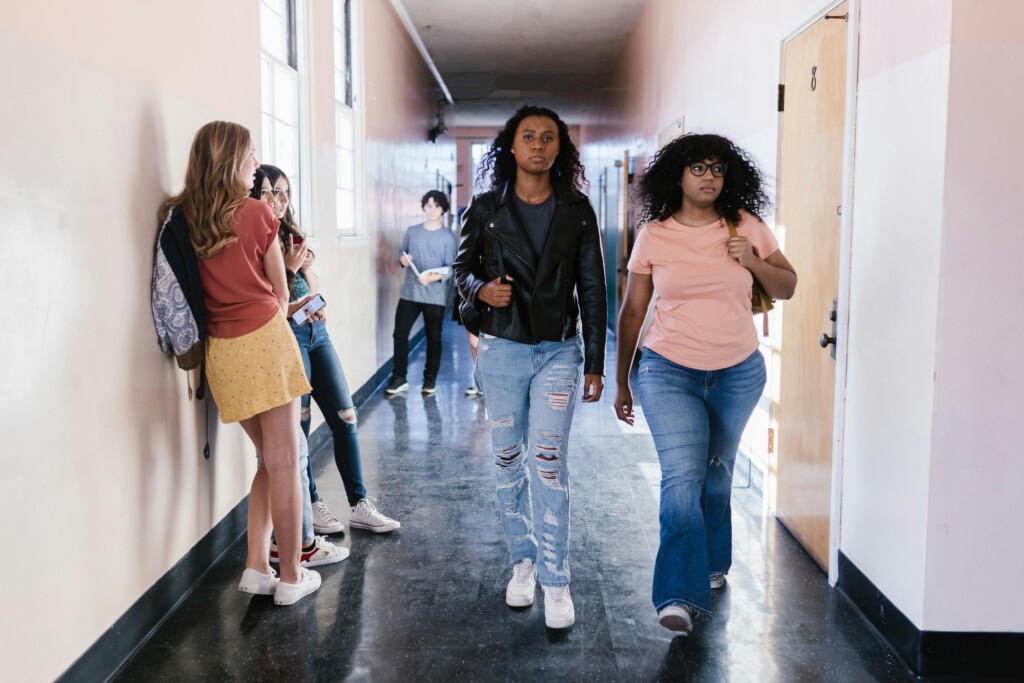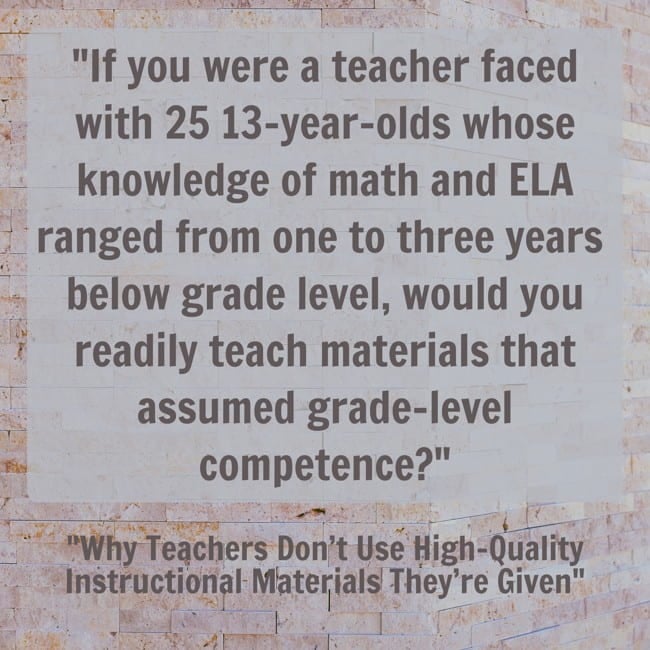By: Jorge Arteaga
In a time when 1 in 5 students face bullying, equipping young people with the skills to stand up against these injustices is more crucial than ever.
While traditional approaches like “tell a teacher” have been helpful, they aren’t enough to address the complex dynamics of bullying today. Students need real-world skills to create lasting change, and that’s where bystander intervention can play a transformative role.
Right To Be, a nonprofit dedicated to ending harassment in all forms, developed the Right To Be Youth Program, a curriculum that gives young people practical bystander intervention tools to safely intervene when they witness bullying or harassment.
The program launched at the Academy of Urban Planning and Engineering in Brooklyn, NY, in 2023, where educators immediately saw positive impacts. “I worked with 9th Graders, and coming in from middle school, there was a lot of harassment and bullying that would happen. After implementing the program, I started to hear the students address each other when they saw instances of bullying or harassment,” said Rosemarie Flore, Teacher and Interim Assistant Principal, Academy of Urban Planning and Engineering.
According to Flore, many of their students came with a “lack of social skills in great part because of surviving through the COVID-19 pandemic in a virtual setting during some of your most formative years, when you learn to interact with others.”
Bullying and harassment have serious consequences, affecting emotional well-being, mental health, and academic performance, often leading to long-term trauma, anxiety, and depression. For students from marginalized communities, harassment adds additional barriers to achieving educational equity.
As one youth participant described it: “Going to school with bullying is like wearing armor every day.” This sentiment highlights the emotional toll bullying can take on students. The Right To Be Youth program aims to equip students to break down these barriers and stand up for themselves and each other.

What is the Right To Be You(th) Program?
The Right To Be Youth Program is grounded in Right To Be’s proven 5Ds of Bystander Intervention methodology. The five strategies provide flexible options for students to respond to these situations in ways that feel safe and appropriate for them.
Here’s a breakdown of the 5Ds:
1. Distract: Create a distraction to defuse the situation.
2. Delegate: Seek help from someone else, like a teacher or friend.
3. Document: Record the incident and share it with the person being targeted.
4. Delay: Check in with the person afterward to offer support.
5. Direct: Set boundaries and redirect attention to the person being harassed.
The methodology offers a toolbox of safe intervention strategies that any student can use, regardless of their personality or the specifics of the situation.
As one student who participated in the program shared, “Learning about the 5Ds showed me there are many ways to help. It doesn’t matter how comfortable you feel—there’s always something you can do.”
Real-World Impact and Lifelong Skills
The program not only teaches students how to safely intervene, but it also emphasizes the power of community. Educators highlighted the importance of using these tools to foster a broader cultural shift within schools, creating environments where inclusion and diversity are prioritized. “For all students engaged in learning the 5Ds, how can I help them understand that situations of disrespect present opportunities for teens to exercise agency in ways they haven’t realized before? And what can help them appreciate the ripple effect of the individual choice to intervene in an instance of disrespect/hate and the eventual change they’re contributing to the overall school climate?” said June Wai, lead facilitator for the Right to Be Youth program sponsored by Rivertown Parents, who is preparing to teach the curriculum this fall.
One program participant also emphasized the importance of this cultural shift: “Schools can help students understand they can change their environment, not just be a product of it. See that you can become what you want and give people hope.”
Right To Be’s 5Ds for You(th) Program builds on the organization’s evidence-based Bystander Intervention training program. To date, Right To Be has trained more than 2 million people in bystander intervention. Approximately 98% of participants report feeling more confident in their ability to support someone experiencing harassment after going through the training. Even six months after attending a session, 76% of participants say they still use bystander intervention strategies in their daily lives.
Educators highlighted the long-term value of the program for youth: “Every year, we have a dialogue day where students address conflicts and troubling behaviors. With the 5Ds, they now have real strategies to support these discussions,” said Jorge Sandoval, Principal of the Academy of Urban Planning and Engineering.
“The idea that we can equip them with tools to interrupt hate and bias feels incredibly meaningful, especially in a time when such skills are so needed,” said Sonia Balaram, a lead facilitator for the program.
The hope is that learning the 5Ds will have an impact far beyond school. Students who gain these skills can also develop confidence, empathy, and leadership abilities that will serve them well into adulthood.
“The 5Ds allowed me to become more confident in helping someone who is in a difficult situation. Even after two years of taking the class, the 5Ds have been engraved in my head. I shared what I learned in class with my relatives so they too can help others,” said one student.
Another anonymous youth participant shared: “This training just reminded me to always be aware of my surroundings and to look out for others in any way I can.”
Right To Be aims to bring this curriculum to 50 schools and youth-serving organizations across the U.S. and Canada. As we wrap up Anti-Bullying Awareness Month, it’s critical that these conversations continue. Programs like the 5Ds for Youth could teach young people that creating safe, supportive communities can start with them.
“We’ve seen students step up in ways they never did before. They’ve become more empathetic and proactive in supporting each other, which has made our school environment feel safer and more inclusive,” said Sandoval.
“Students no longer feel helpless when they see someone being harassed; they feel equipped to act. Now, I hear students say, ‘I’m going to delegate and get help’ when they see bullying happening,” said Flore.
Ultimately, these students are not just changing their schools; they’re paving the way for a more inclusive, compassionate world.
Jorge Arteaga serves as the Vice President of Movement Building at Right To Be, overseeing initiatives aimed at fostering safer, more inclusive environments by advocating for anti-hate and anti-harassment strategies and community empowerment.
The post Why ‘Just Tell a Teacher’ Isn’t Enough – The Power of Bystander Intervention to End Bullying appeared first on Getting Smart.
Bystander intervention empowers students to combat bullying, fostering safer, inclusive schools through practical tools and community support.
The post Why ‘Just Tell a Teacher’ Isn’t Enough – The Power of Bystander Intervention to End Bullying appeared first on Getting Smart. Equity & Access, Leadership, SEL & Mindset, Climate, dialogue, Diversity and inclusion, equity, leadership, mental health, middle school, parents, school culture, Social-Emotional Learning Getting Smart








